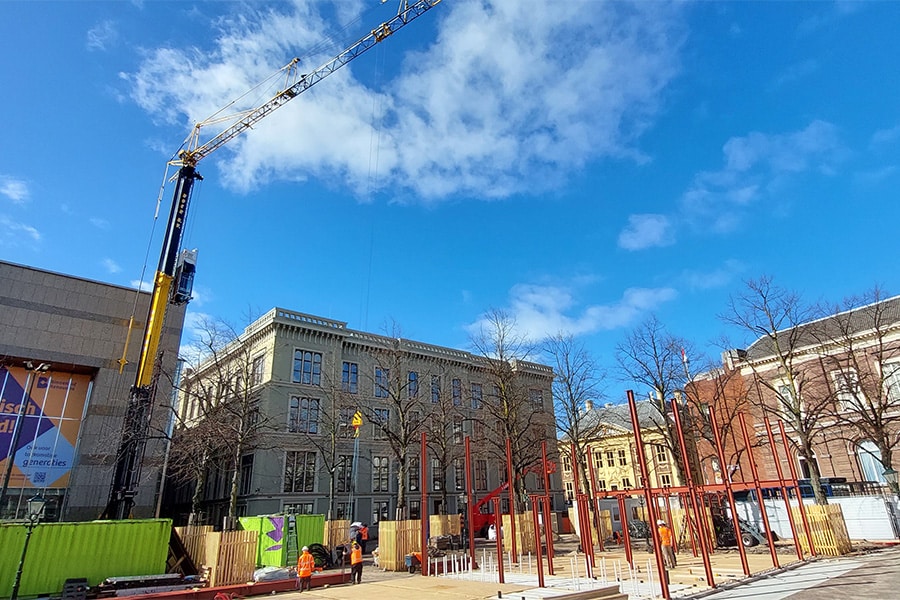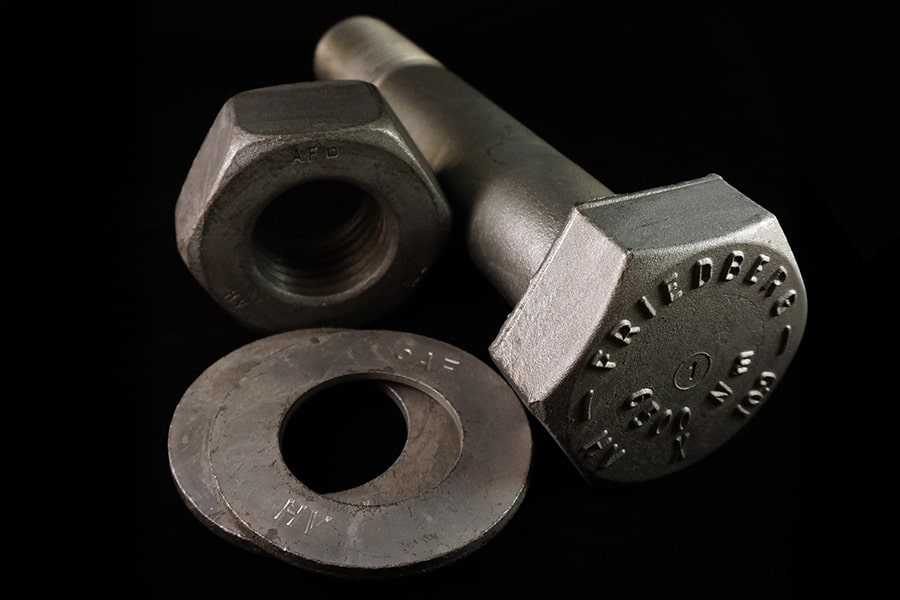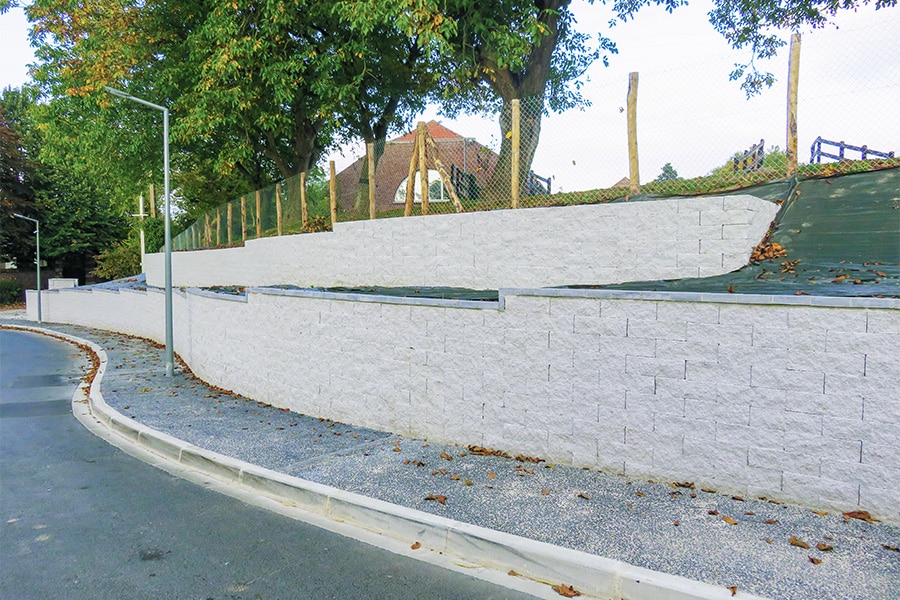
Concrete for the future: greener, stronger and more economical
The CO2-emissions from concrete can go down 25 to 65%. So concludes Maarten Meek in his master thesis at TU Delft. The CO2-emissions can even be brought down in several ways. The trick is to find the best composition for the constructive, environmentally friendly geopolymer concrete.
When Maarten Meek, structural engineer at Van Rossum Raadgevende Ingenieurs, wrote his master thesis at TU Delft in 2019, the search for sustainable concrete was already in full swing. It was believed that the environmentally harmful component in particular - cement - needed to be replaced with an environmentally friendly variant. Interestingly, during his literature review, Meek discovered that - apart from the CO2-reduction - there are still more gains to be made. For example, "green" geopolymer concrete could just be more beneficial, requiring less concrete and less reinforcement. "Then you kill three birds with one stone."
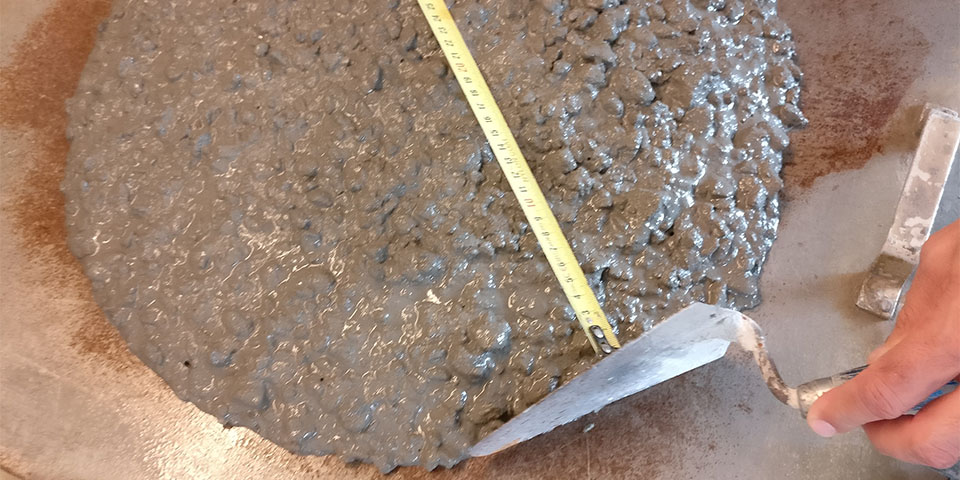
Measurement of the shake size, which determines the consistency of the concrete mortar.
Traditional versus green concrete
For the laymen among us, Meek provides a brief explanation: "Traditional concrete is created by mixing a mixture of sand and gravel with water and cement, with the environmentally harmful cement binding and hardening the necessary constituents. Substances that can take over the job of cement - also called precursors - include fly ash and blast furnace slag. These by-products from other industries are also widely used in the Netherlands for the manufacture of concrete. In geopolymer concrete, a precursor is used instead of cement, which when mixed with an alkaline activator takes care of binding and hardening. The alkaline activators are also environmentally harmful, but still leave a substantial CO2-reduction seen."
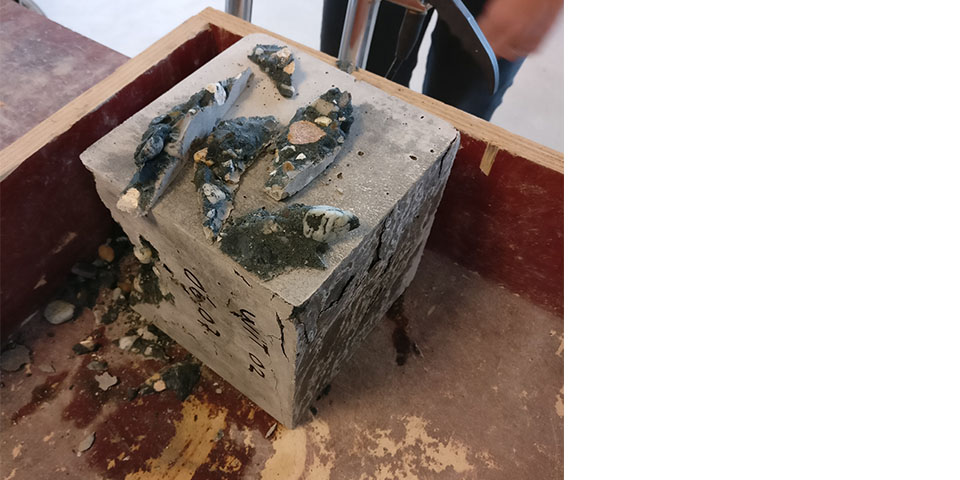
A geopoylated concrete cube tested in the compression bench.
Long lifespan
During his research, Meek learned that geopolymer concrete has been used in Russia for more than 70 years. Because of the shortage of Portland cement, concrete works of art like fountains here were made of a type of concrete, which is almost the same as geopolymer concrete and has excellent properties. "Because this type of concrete has been used here for 70 years, it was relatively easy to research its durability," Meek says. "Artwork made of geopolymer concrete was found to still look excellent - compared to objects made of cement concrete and the same age - while the concrete of other objects was already deteriorating."

ir. M.E. (Maarten) Meek.
Standards
In Australia, the search for sustainable concrete is a hot topic. Australians are already using a structural geopolymer concrete called Earth Friendly Concrete. Meek: "Australia is a forerunner in this field. It sees cement as a real culprit. For this reason, standards are now being set here for new types of concrete. That's a big step forward."
Alternative with potential
In his research, Meek concludes that much is possible. After all, there are many different precursors and alkaline activators and they can be applied in an almost unlimited number of ratios. "The compositions will result in more and less favorable properties. The CO2-emissions we unfortunately cannot undo, but there are certainly alternatives to Portland cement, and geopolymer concrete is one with potential. We will have to figure out the best alternative through a lot of research."
